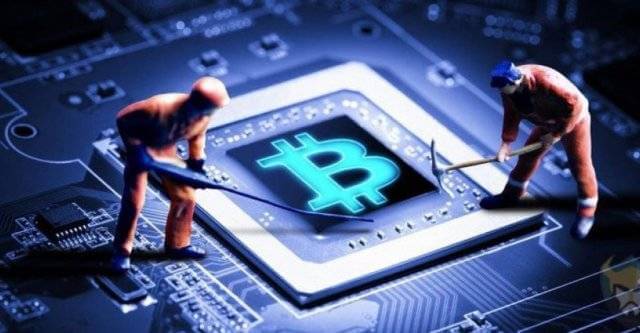 Cryptocurrency mining is the method of earning cryptocurrency by validating a transaction made in return for solving a complex mathematical problem. This acts as a “proof of work”, basically designed to level the playfield for the miners. A high-power computer machine is required for the process, and the level of complexity of the problems increases gradually for fair play. So, broadly speaking, if your device contributes to the process of mining, you earn the share of the spoils.
Cryptocurrency mining is the method of earning cryptocurrency by validating a transaction made in return for solving a complex mathematical problem. This acts as a “proof of work”, basically designed to level the playfield for the miners. A high-power computer machine is required for the process, and the level of complexity of the problems increases gradually for fair play. So, broadly speaking, if your device contributes to the process of mining, you earn the share of the spoils.
The validation of the transaction involves authenticating the data blocks first at the local “nodes”, thereafter into the public ledger to be integrated with the global “blockchain” network.
Methods of crypto mining
There have been four general ways to mine cryptocurrencies- Cloud mining, CPU mining, GPU mining, and ASIC (Application-Specific Integrated Circuits) mining.
The process where you pay a big corporation that has huge mining facilities with multiple farms to rent out their rig (mining machine) for an agreed period of time is cloud mining. You are then paid your agreed share of cryptocurrency to your wallet for all the earnings made out of the mining.
CPU mining employs the use of processors to mine cryptocurrencies. However, it is not very popular because of its extremely slow pace, and issues related to overheating of the device. Nevertheless, for the miners who do want to promptly jump into the mining process, CPU mining is the preferred mode.
The most popular method of mining is GPU mining since it is an efficient and faster way to mine cryptocurrency. A GPU mining rig consists of a processor, a motherboard, a rig frame for cooling, and a few graphics cards. A hash speed and a general workforce are the important characteristics of a GPU rig.
ASICs are explicitly designed devices to perform one particular task, like crypto mining. These are known to yield an insane amount of cryptocurrency. However, these have been a constant subject of controversies- involving robbing away the other miners using CPU or GPU rigs.
Deciding parameters for the choice of crypto mining method

The key deciding factors for choosing a crypto mining method are:
- The willingness to pay expenses for an initial money
- Opting for a rig or a personal device like a computer to mine cryptocurrency
- The willingness to either own or rent a rig facility
Broadly speaking, you could weigh the pros and cons of every mining method to decide the best for yourself. While the CPU method is slow and energy-draining, the ASIC method is quite unpredictable, owing to the volatile nature of the process.
Similarly, building your GPU rig could involve investing in some initial expenses, while CPU mining is a method that requires the least investment.
For those who are willing to take risks amongst the swarm of controversies, ASIC is a bold option. And finally, if you want to play safe, not interested in rigs and machinery, Cloud mining seems to be the most viable option.
Choosing the cryptocurrency to mine
Now that you have decided the way to mine cryptocurrency for yourself, you should make a choice on which one to mine!
The common ways to select are- checking out and comparing the prices of each of them and calculating the period of return over investment. Top cryptocurrencies include- Bitcoin, Ethereum, and Dash.
While Bitcoin involves a long wait period, owing to its popularity amongst the miners, other less popular cryptocurrencies could be a wiser option for those who believe in early returns.
Types of crypto wallets
The next pivotal step in cryptocurrency mining is choosing the best wallet to store your mining rewards. Some of the trusted wallet recommendations include- Ledger Nano S, Coinbase, Trezor. For the lesser-known cryptocurrencies, wallets with established reputations have to be found.
Overall, five types of wallets have been identified- hardware, desktop, mobile, web, and hot and cold wallets. While hot wallets are connected to the internet, less secure, and more likely to be used for daily transactions; cold wallets are stored offline, require no internet connectivity, are secure, and are used for long-term holdings.
Hardware devices like a battery-less USB with OLED screen and side buttons act as hardware wallets- like Ledger Nano S and Trezor; software packages installable at operating systems from the desktop wallets- like Exodus, Bitcoin core, Electrum, Bitcoin Equaliser, etc.
Wallets made for smartphones are mobile wallets, like- Coinomi and Mycelium; and those accessed by internet browsers are web wallets, for example- MetaMask and Coinbase.
Conclusion
Mining is tailored according to the availability of your resources and your choice of yield. So, while you enter into the fascinating world of mining, we wish you the best of luck!

Founder Dinis Guarda
IntelligentHQ Your New Business Network.
IntelligentHQ is a Business network and an expert source for finance, capital markets and intelligence for thousands of global business professionals, startups, and companies.
We exist at the point of intersection between technology, social media, finance and innovation.
IntelligentHQ leverages innovation and scale of social digital technology, analytics, news, and distribution to create an unparalleled, full digital medium and social business networks spectrum.
IntelligentHQ is working hard, to become a trusted, and indispensable source of business news and analytics, within financial services and its associated supply chains and ecosystems









